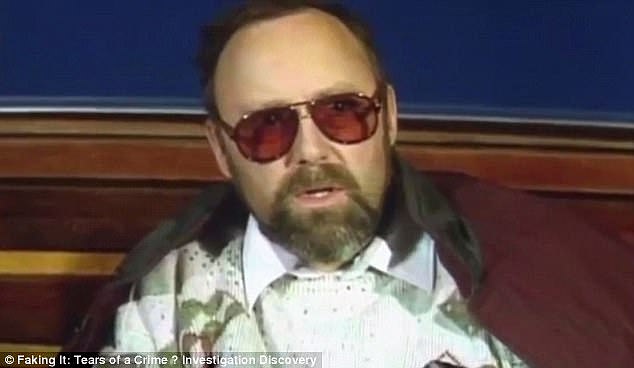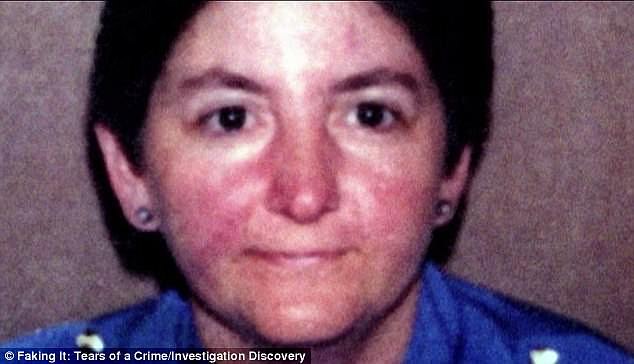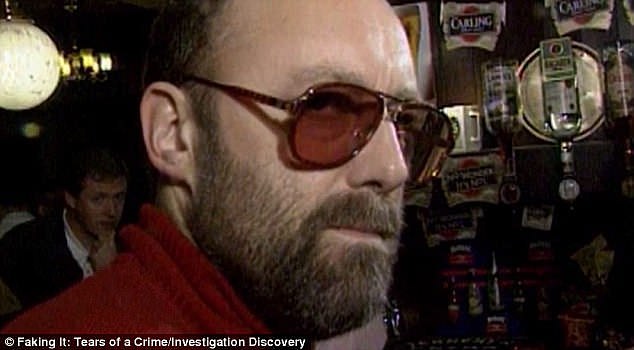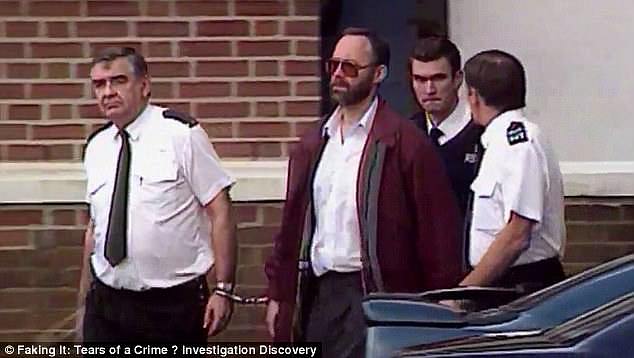Husband who murdered his wife and blamed it on a gang of thugs wearing clown masks is released after 26 years in jail
A husband who murdered his wife and blamed it on a gang of thugs wearing clown masks in a hoax TV appeal has been freed after 26 years in prison.
Gordon Wardell was sentenced to life imprisonment in 1995 for the murder of his wife Carol, 39, who he claimed was kidnapped by men wearing ‘clown masks’.
Callous Wardell, then 42, killed Carol and dumped her body in a car park on Monday, September 12, 1994, then carried out the aftermath of a raid on their home in Nuneaton, Warwickshire.
He told police – who found him bound and gagged in his underwear at the property after the discovery of Carol’s body – that he had been attacked and drugged by a gang after he returned home to see them holding his wife.
Wardell appeared at a police news conference in a wheelchair, wearing orange-tinted sunglasses and was visibly shaken a few days after the murder, and his over-the-top actions immediately made him a suspect.
Gordon Wardell with his wife Carol, whom he murdered in September 1994 – before trying to blame a rogue gang of men wearing ‘clown masks’

Wardell presented an elaborate alibi at a police press conference, crying through crocodile tears that his wife ‘worked hard’
Despite many emotions and crocodile tears, the only kind words the supposedly grieving widower could say about his wife at the press conference days after her death were that she “worked hard.”
He described to reporters in detail how he returned home to find a man wearing a clown mask and dark blue overalls threatening his wife with a knife.
He claimed to have been grabbed from both sides, pushed down and lost consciousness after a cloth was placed over his face. Wardell said he didn’t remember anything else until he later woke up bound and gagged.
During the press conference, Wardell was asked questions about a previous conviction for grievous bodily harm. He replied that he did not see how the question was relevant and reiterated that he only wanted his wife’s killers to be found.
On Sunday, October 2, 1994, police, with Wardell’s help, conducted a reconstruction of his movements on the Sunday evening before his wife was found murdered.
Retracing his steps, after leaving his home in Meriden he had driven to Coventry to post some letters at the main sorting office before driving to a pub on the outskirts of Coventry where he had two drinks before heading to returned home to look for his wife. held on the tip of the knife.
Police hoped the reconstruction, reported by local and national media, would jog someone’s memory so they could come forward with new information.
It was also a ruse to allow Wardell to implicate himself as police considered him a strong suspect.
Wardell had previously been convicted of serious assault and grievous bodily harm in the 1970s, for which he served time in prison.

Carol Wardell had been a branch manager of Woolwich Building Society and was robbed of more than £14,000 on the day of her murder

Wardell was jailed for life in 1995 after being convicted of murdering his wife, but was quietly released on license in December 2021.
The rebuilding was extensively covered by the national and local press and TV, as the story made headlines across the UK.
Wardell’s lies began to unravel – police discovered he had been visiting prostitutes in Coventry’s red light district – and he was arrested on Thursday 20 October 1994.
A jury at Oxford Crown Court was told that Wardell raided the Nuneaton branch of the Woolwich Building Society, stealing £14,000 and leaving one of his wife’s sandals in the office in an attempt to cover his tracks to erase.
He tied himself up and gagged himself in the couple’s home, where he was found by police. He told them that a gang had kidnapped his wife, who was found strangled.
The jury unanimously rejected his story after a six-week trial in which 128 witnesses were called.
In December 1995, Wardell was sentenced to life imprisonment. The Home Secretary set Wardell’s minimum age at 18 years.
Sentencing Wardell, Judge Cresswell said: “You are an extremely dangerous, malicious and devious man. You brutally murdered your wife and then cynically evaded detection by doing your utmost to create the impression that your crime was the work of a gang of robbers.
“This murder was a shame to your wife, her family and all who knew her.”
There were sounds of ‘yes’ from the public gallery and Mrs Wardell’s mother, Joan, burst into tears. Wardell, a 6-foot-4 fitness fanatic, looked pale and shook his head.
After the sentencing, Carol’s mother, Joan Heslop, said: ‘Carol can now rest in peace. She loved life and was full of life. It was terrible that it was taken away in such a way.”
Chief Inspector Tony Bayliss, who led the murder investigation, said a motive for the killing was never fully established, although one theory was that Wardell was at risk of losing his job as a director of a car parts company.
“It inevitably led to financial problems, but I believe the murder was domestically oriented,” he said at the time.
MailOnline can reveal that Wardell was quietly released on license in December 2021. It was his fifth review before the Parole Board. Wardell is now 70 years old.

Wardell was involved in reconstructions in a ploy by the police to implicate himself in the crime

Wardell was sentenced to life imprisonment for a minimum of 18 years. He was released after serving 26 years behind bars
A Parole Board spokesperson said: “We can confirm that a Parole Board panel ordered the release of Gordon Wardell following an oral hearing in December 2021.
“Decisions made by the Parole Board focus solely on the risk an inmate might represent to the public if released, and whether that risk is manageable in the community.
‘A panel will carefully examine a wide range of evidence, including details of the original crime and any evidence of change in behaviour, and examine the damage caused and the impact the crime has had on the victims.
“Members read and digest hundreds of pages of evidence and reports in the lead-up to an oral hearing. During the hearing, evidence may be presented from witnesses, such as probation officers, psychiatrists and psychologists, officials who supervise the offender in prison, and personal statements from the victim may be taken.
‘It is standard practice for the prisoner and witnesses to be questioned at length during the hearing, which often lasts a full day or more.
“A parole review is conducted thoroughly and with the utmost care. Protecting the public is our first priority.”
